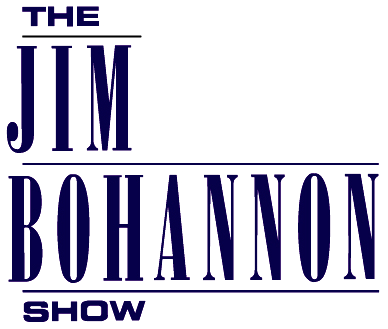CEO as Candidate
THE JOB OF THE CEO IS CHANGING FAST. ARE YOU READY?
For years, co-author Scott Miller and I have been accused of telling political leaders they need to learn to think more like brand marketers, while telling CEOs they need to learn to think more like political leaders. We’re guilty. In fact, today’s corporate leadership demands a combination of both.
Steve Jobs of Apple first asked our company to develop a political model for corporate strategy for his competition with IBM and Microsoft. He thought our experience of 40 or so governors’ and senators’ races in the US and a dozen or so global presidential campaigns had helped us develop sharper strategies and sharper elbows than his management consultants.
The insurgent political model we created for Apple worked then and works today. We’ve used it for all kinds of competitive and market challenges for companies like Verizon, Nike, American Express, Google, Coca-Cola, McDonald’s—and a series of start-ups and upstarts.
In today’s turbulent information environment, it is not enough for a CEO to be a strong operator or manager. The CEO must be a strong leader. In the 1980s, pundits used the nickname “The Great Communicator” as a kind of insult to Ronald Reagan’s leadership as President. It was, even as Michael Deaver called it, a “staged Presidency.” Some may feel a little nostalgic for that description these days. But, think about it: What’s the job all about?
- The President must explain the complex workings of our Government to the American people
- The President must gain consensus for his programs and policies.
- The President must define the United States in the world.
The President must be a great communicator. And, to be successful today, you, too, must be a great communicator. Here’s how to approach it.
THE CAMPAIGN:
Today, it is generally accepted our President must be a great communicator. The idea of the “permanent campaign” is also accepted. This means the President can never stop running—though it may be his ideas and policies for which he wants to win support. The same is true for today’s CEO. She or he must use the strategies and tactics of the most successful political leaders to lead effectively.
- First, there’s the issue of engagement. Today, according to Gallup, only about 30% of corporate employees are engaged in their work. The remaining 70% are just showing up, going to pointless meetings, complaining and checking Facebook.
- Second, there’s the issue of reputation. 80% of consumers say they want to buy from companies they trust. 68% say they recommend companies that have won their trust. 63% say they won’t buy from a company they don’t respect, and 58% say they will share their criticism with others. A company’s reputation and the degree to which its values are shared by all stakeholders affect literally every company relationship and all operations. Global PR giant Weber-Shandwick has found that the CEO
accounts for more than 49% of corporate reputation— and upwards of 70% of the CEO’s job is all about communicating effectively.
Third, there’s the challenge of leading the charge: convincing others to follow you over the top.
Today, corporate culture requires really strong glue, with so many factors trying to pull it apart. Bob Iger at The Walt Disney Company has found a strong culture for any company will allow employees to say three things: “I’m a part of something great”; “I can make a difference”; and “somebody recognizes the difference I make.”
Successful brands, products, and companies must have a credible and compelling narrative that explains in human- sized language what it does, and how and why it does it. The relevance, differentiation, and authenticity of this narrative will be the difference between success and failure.
BEGIN WITH KEY DEFINITIONS:
We begin this “CEO as Candidate” campaign by developing a set of definitions. Together, they form the bones of the narrative.
Define the Win: Success is your destination. Strategy is the map that will take you there. What if you do everything right? What will be the metrics of success over the next two to three years? How will key stakeholders think, feel, and talk about you, as a result of this success? How will they behave differently? And, importantly, as you define winning, you must define how the organization will contribute to the “greater good.” Remember Bob Iger’s objective to make every employee feel they are a part of something great.
Define Yourself: The people you want to lead deserve to know what you are all about. And, their own experience from years of watching politics has taught them not to
believe what you say you will do. What they want to know is not what you say you will decide, but how you will decide— what values and experiences shape every decision for you.
Define the Stakes in the Election: The people don’t really care about your option package or bonus—that is, unless the company is failing. What they want to know is how you define the “win-win-win” for your customers, for the employees and, then, for yourself. You must show them that you have the same skin in the game as they do (and that is not easy for a CEO today).
Define the Enemy: What stands between your company and the destination of success you’ve defined? What are the obstacles, what are the market threats, and what are your team’s own key weaknesses that will stand in the way of the win? In most of the companies with which we’ve worked, the “enemy” is almost always “us”; it’s an inability to break old patterns of behavior or to rethink a future vision.
Define the Future: Where are you leading the organization—and all of its stakeholders? What is the future vision you represent? Change-leader companies are vision- driven, not heritage-driven. They must know the direction and destination of this flight, before they buckle-up for the trip.
RUN AN UNDERDOG CAMPAIGN:
In politics and business today, insurgents hold all the cards in any competition. Size, scope, and heritage are far less important today than mobility, speed, and vision. The “permanent campaign” to get to the “win” you want for your organization must be developed as an insurgent campaign— no matter what your market position or history are.
Learning and teaching your organization to think, plan, and act like an underdog will create the greatest energy and focus—not to mention the greatest success.
We help shape these campaigns around key insurgent principles, proven over the centuries in revolutionary victories in political campaigns, business competitions, military conflicts, and sports contests:
- Do the Doable: Never set unattainable or even “stretch” goals—because failing to reach them energizes your opponents and deflates your followers. Do what it takes to get a series of very small victories and create momentum—it is magical.
- Move the Movable: Realism and scarce resources force insurgents to focus efforts where they can have the greatest success. Most importantly, this must start with nailing down and activating your Hard Support loyalists. Next, you must use this loyalist activation to win over the Soft Support. A focus on these two groups will do more to move the Undecided than anything else—because it is the momentum, behavior, and buzz of these groups that motivates the Undecided. Of course, you won’t ignore the Hard Opposition—and you should monitor the success of their actions and arguments against you. Ultimately, you can develop long-term plans on pulling the Soft Opposition toward neutrality or even Soft Support—but that’s long-term; first, focus on short-term, doable wins.
- Build Your Strength Inside-Out: Revolutions begin among a small group of believers. Success means gaining more and more support for your ideas and actions. This is done by a process of transferring ownership of your strategies and goals from the inside- out: first, energizing your loyalists, then moving toward less committed groups. This is based on the strategies established in “Move the Movable.”
- Remember, Everything Communicates: In successful campaigns, everything matters—every action and interaction, every move and communication. What you say off-camera is just as important as what you do on-camera; details make the difference, so, you must shape all details around a compelling core strategy.
- Never Play Defense: Reactive and defensive actions and communications sap the energy of your own team and seldom succeed against the opposition. Plan to “retaliate first”—be positive, but proactive, always moving forward.
SUMMARY:
Our principles of “CEO as Candidate” used to be a metaphor for the kind of strategic focus required of the CEO. Now, this political metaphor is a reality. Like it or not, you and all you stand for are running for election. This “CEO as Candidate” plan—developed, personalized, and executed in daily detail— is how you win today.
 Romney gets personal, more likable
Romney gets personal, more likable The Point: The Underdog Advantage
The Point: The Underdog Advantage








